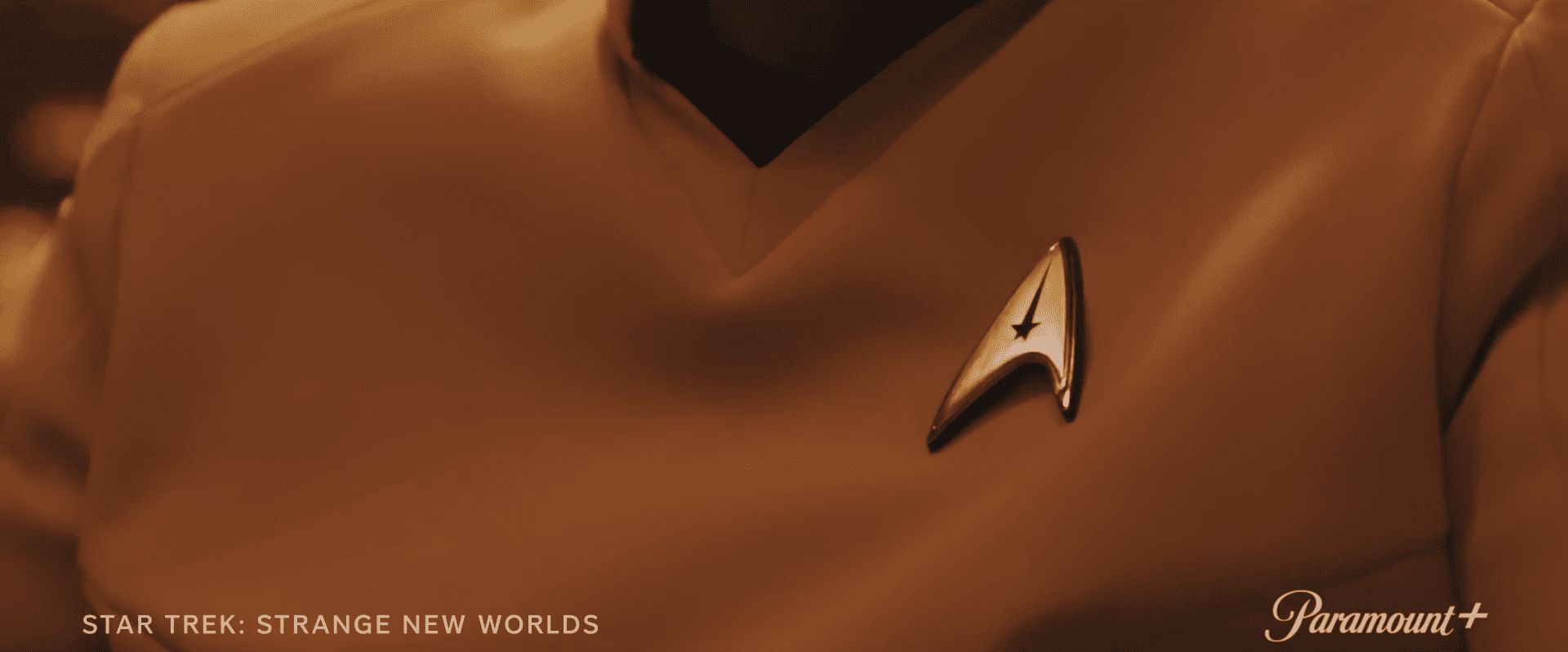
Led by “Star Trek: Strange New Worlds,” the new era of “Star Trek” on Paramount Plus is undeniably exciting. “Strange New Worlds” deftly walks the line between paying respect to “Star Trek: The Original Series” (“TOS”) and innovating to bring “Star Trek” into the modern era. With the use of virtual production, which uses large LED screens and 3D camera tracking to create sets with live backgrounds, as well as impeccable set design, costumes, and props, “Strange New Worlds” continues to set the bar higher.
How the Retro-Tech Props in ‘Strange New Worlds’ Are Made
While the prop design from the original series is outdated compared to today’s standards, the retro props used in “Strange New Worlds” help it stand apart from similar shows. For the prop designers, staying true to the props from the original series is the prime directive. They have to innovate without deviating too much — otherwise, they could retcon details of the original series. It’s not easy, but if you’ve seen the show, you wouldn’t know it. The props are expertly designed and everything from bloodwine cups to Vulcan jewelry has a distinct style, immersing viewers even more into the world of the Federation.
Deltas

Perhaps one of the most iconic props from “Star Trek” is the Delta — the badge pinned on every Starfleet member. Over time, Deltas have evolved from the cloth patches used in the original series to the metal ones used in more recent series. Every ship’s crew across Starfleet wears a different Delta, which differentiates them among the fleet.
According to Jim Murray, the “Strange New Worlds” prop master, the Delta for “Strange New Worlds” is closely based on the ones used in “Star Trek: Discovery.” However, for “Strange New Worlds,” the Deltas have a subtle black edge that differentiates them from the ones used by the Discovery crew. The Deltas are magnetized, which makes them easy to place on a Starfleet uniform without ruining the fabric. For Season 2, the props department made a new Delta for an alternate-reality James Kirk (Paul Wesley).
Phasers
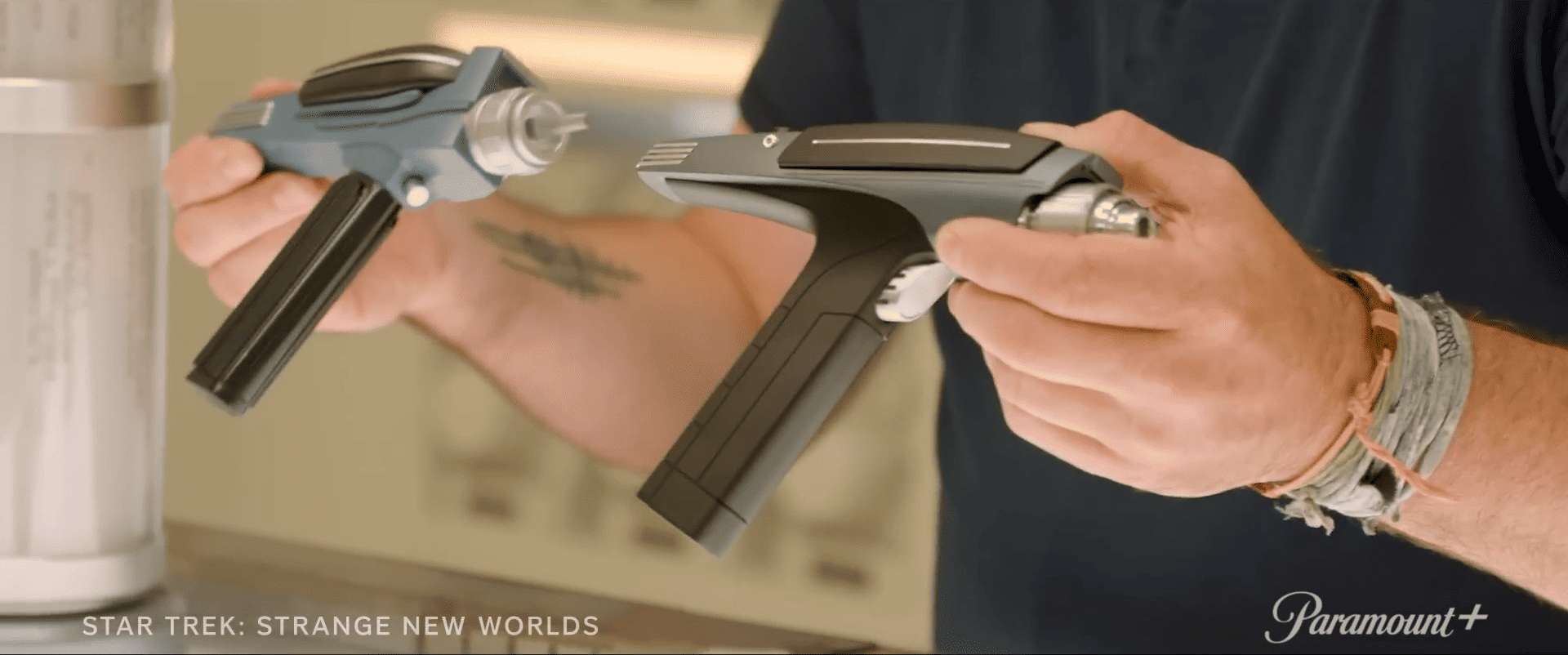
The phaser is another iconic prop that has been featured in some form on every “Star Trek” project since the original series. For “Strange New Worlds,” Murray wanted to stay true to the design of the “TOS” phasers. While the new phaser has an almost identical design when it comes to shape, it’s overall much sleeker.
The new phasers are also a lot smarter, sporting an internal chip and battery that control their light. Toggling a button on the phaser changes the light from blue to red — or from ‘Stun’ to ‘Kill.’ These gorgeous handcrafted pieces are made from aluminum and cost roughly $6,000 per phaser. With such a high price tag, only six phasers were made for the first season. Additional phasers made from foam and rubber were made for stunts and extras.
Communicators
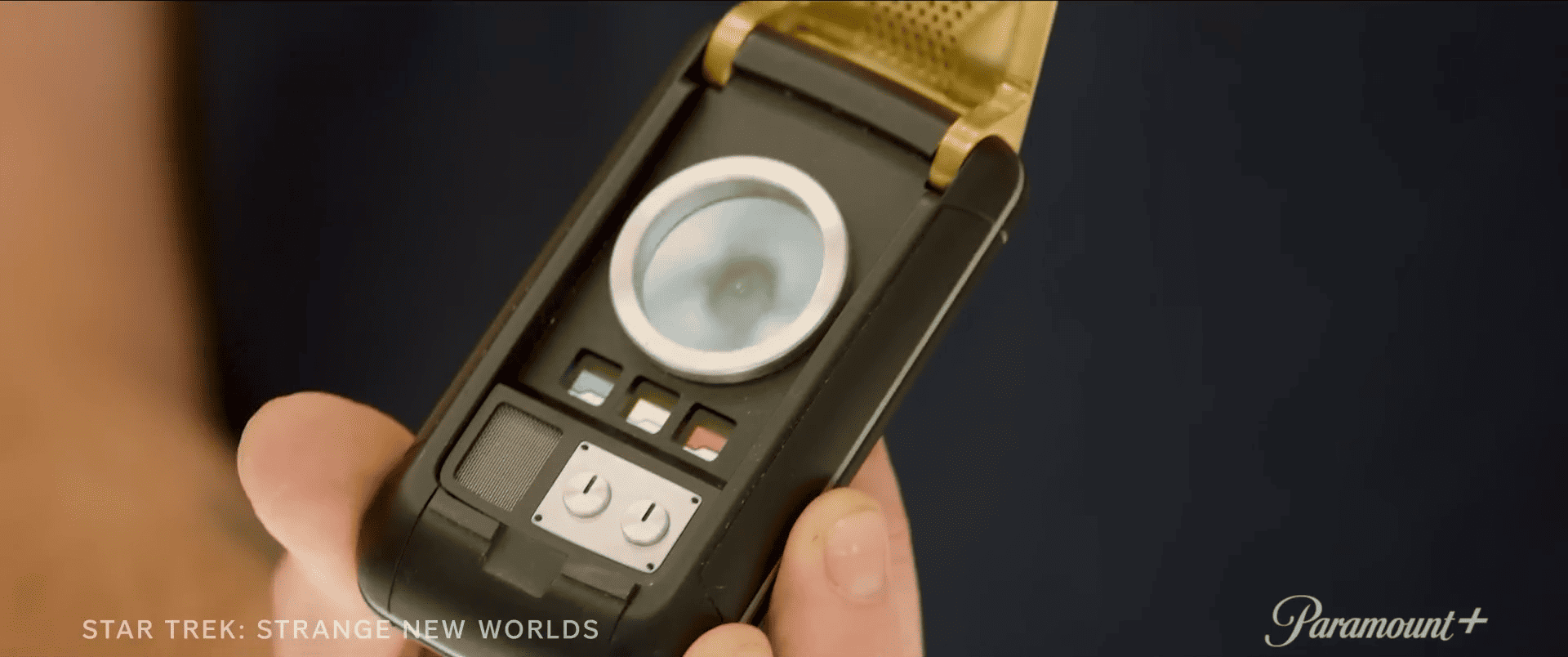
The design of the “TOS” communicator is timeless, preceding the flip phone by several decades. For “Strange New Worlds,” the props department kept the design as close to the original as possible. The new communicator is made from aluminum and still has that satisfying flip action, though the device is much slimmer than before. To add animations to the circular display on the device, the props department placed an iPod Nano inside. In the second season, another communicator was made for La’an (Christina Chong) in an episode where she travels to an alternate reality. The communicator is a lot more minimal, with sleek, black housing and a single LED light that can change from red to green.
Tricorders
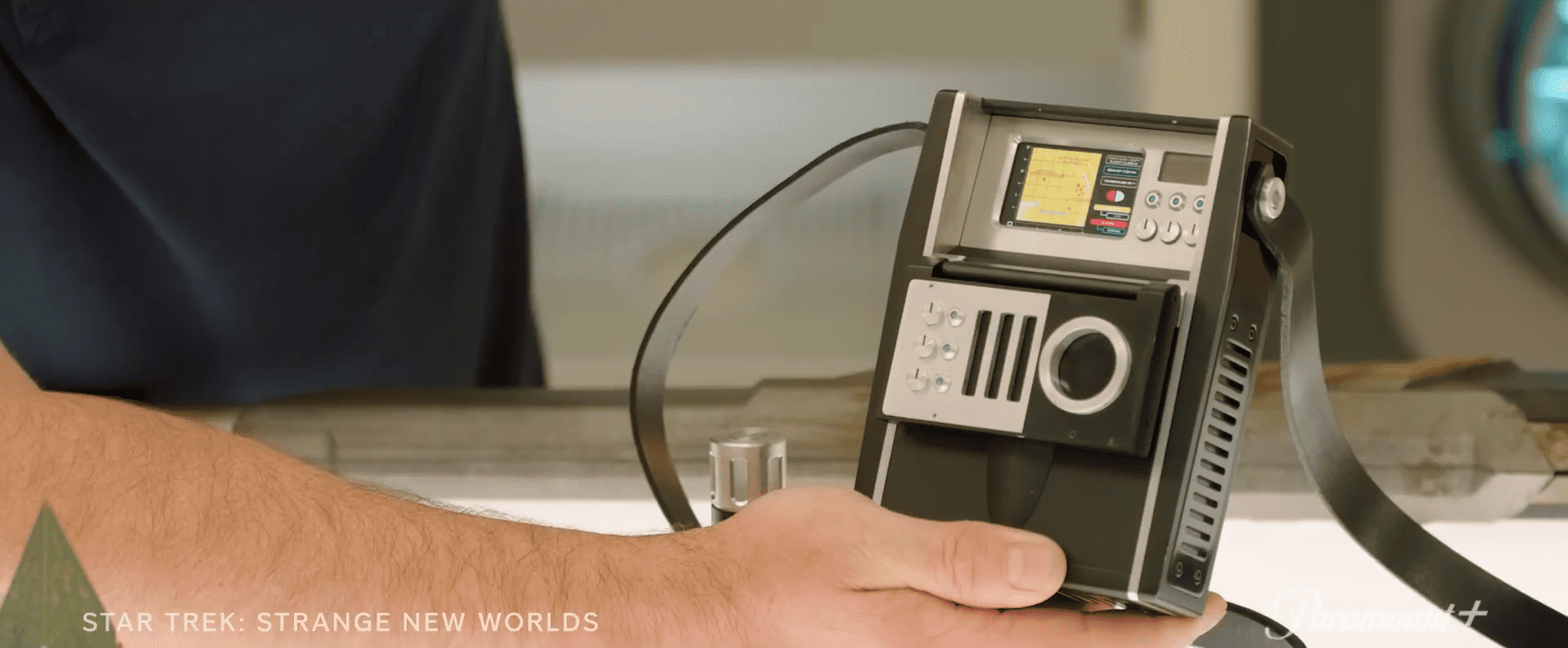
The tricorder is a handheld computer that looks like an old shoebox tape recorder. The “Strange New Worlds” tricorder is heavily inspired by the version from “TOS,” but has a few modern touches. The buttons on the new tricorder are purely for decoration, but it does have an interactive display. The tricorder scanner is magnetized and able to slip into the tricorder with relative ease, and it has internal LEDs that can change colors.
Non-Starfleet Props
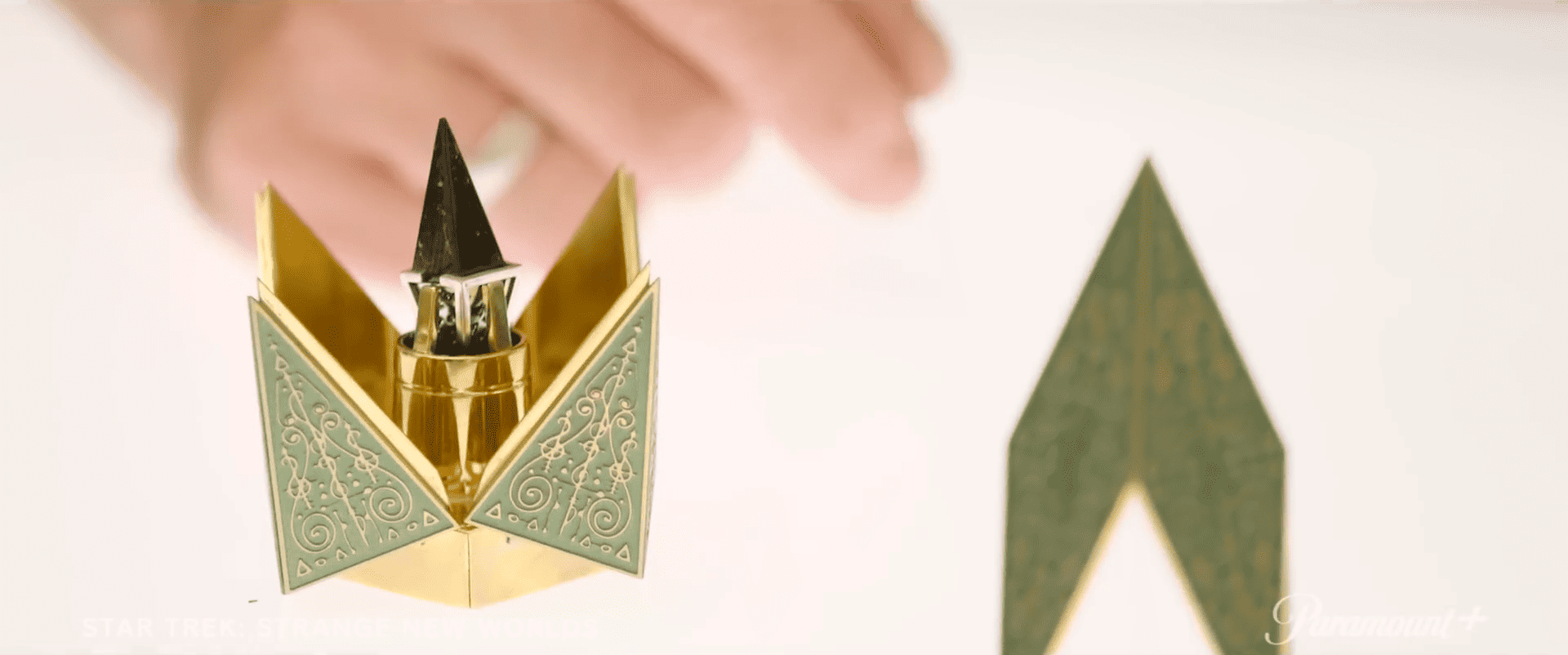
The crew of the Enterprise aren’t the only ones who get to play with props. In an episode from Season 1, in which T’Pring (Gia Sandhu) gifts a necklace to Spock (Ethan Peck), the props department designed a luxurious, jade-colored pyramid enclosure with gold filigree for the pendant. According to Murray, this piece also cost around $6,000 to create. It’s a bit overkill, but a work of art nonetheless.
The props department doesn’t always build props from scratch. Sometimes, they repurpose a common household item by making slight modifications. For example, in Season 2, there’s a scene where cups are dunked into a bowl of bloodwine, which was made by making some slight adjustments to a black flower pot. Later in the season, the props team modified sledgehammers by weathering them and adding bits of leather to their handles.
Props to ‘Strange New Worlds’
It’s only with great care and respect for the source material that a reboot can properly succeed and, in some ways, be better than the original. “Strange New Worlds” is an example of that. The talent both in front and behind the camera is immense, and you can see that simply by paying attention to the level of quality that goes into the props — especially ones that show up for a single scene. You have to give them props for that.
